In the Academy Award-nominated Food Inc, filmmaker Robert Kenner reveals how the extensive range of products we see on supermarket shelves is actually controlled by just a handful of companies.
Today I’m going to reveal how the seemingly diverse list of websites in Google search results are often owned by just a few brands, and exactly what you can learn from those brands in question.
I first covered this topic back in 2016, resulting in the most successful article I’ve ever published. Seven years later it still gets mentioned weekly in tweets, Facebook groups and newsletters.
Many of the leading websites in that initial report are still dominant today, but the companies behind them and how they operate have massively evolved, so today I’m excited to bring you the result of months of work and share exactly what they’re doing to succeed right now in 2023.
If you wonder where SEO and publishing content online is heading in the age of AI, there’s probably no one better to track and analyse than the companies whose search engine rankings are worth billions of dollars.
The 16 Companies Google Sends a Combined 3 Billion+ Clicks Per Month
The 16 companies in this report are behind at least 562 individual brands which get traffic from Google each day.
Combined, Semrush estimates they pick up around 3.7 billion clicks from the search engine each month. An average of 6.5 million monthly clicks per site.
This report is not an attempt to track every single brand doing well in Google.
I’m primarily focused on networks with sites in a variety of niches (such as Pets, Tech, Food and Sports) that typically publish English-language content.
Many are insanely financially successful, in no small part due to the traffic search engines like Google sends their way, and you’ll likely search for something today where they’ll be on the first page of results.
I think there’s a ton we can learn from them, but first they need an introduction. A graphic seemed like the best fit:
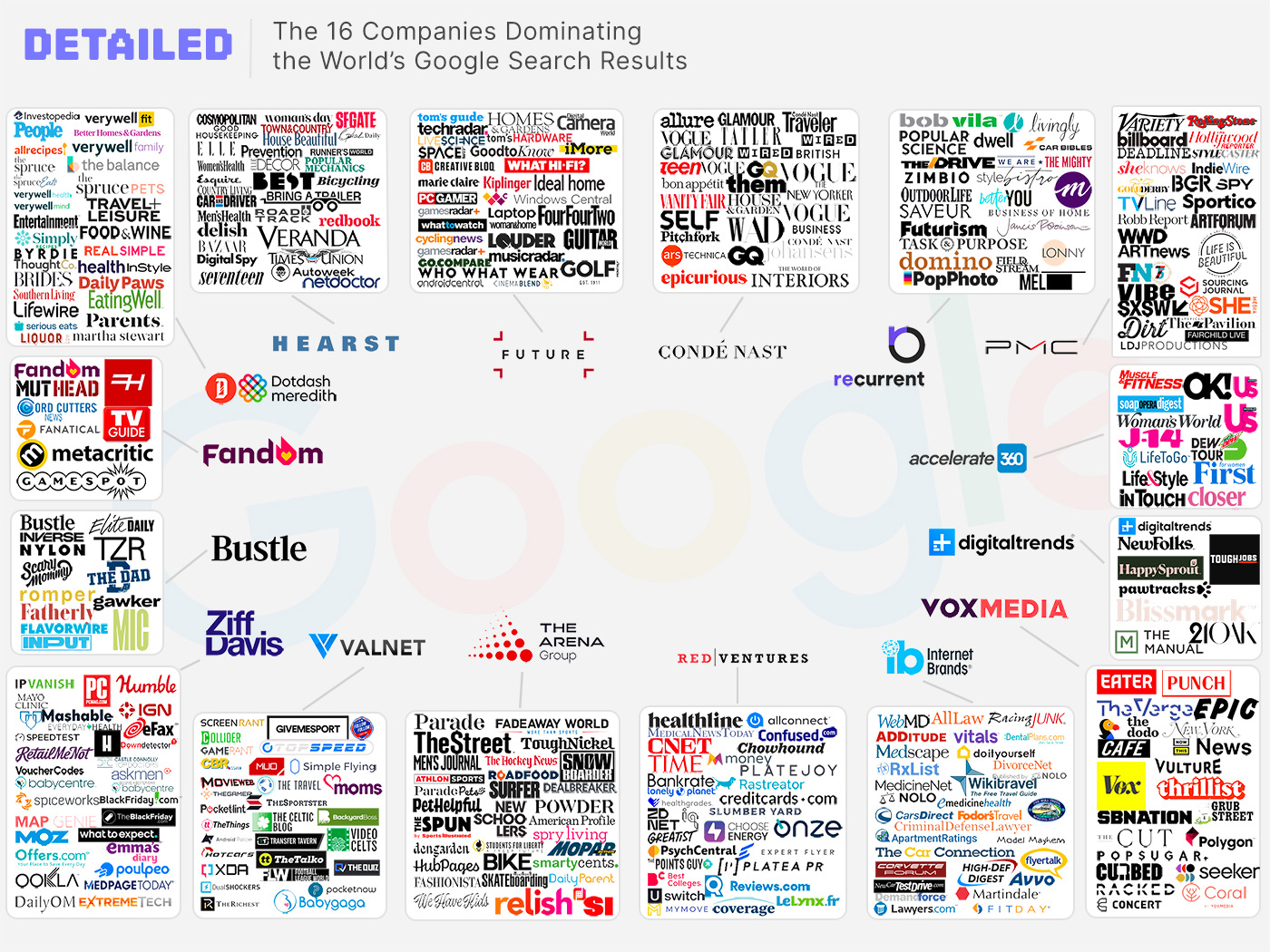
This might look overwhelming, and yet it doesn’t come close to the 500+ sites we’ve analysed for them.
Technically, only seven of the sixteen companies from my original report are still here. Purch & Dennis Publishing were acquired by Future. The biggest sites of CBS are now owned by Fandom and Red Ventures. Gawker is no more, and the other networks just aren’t dominant enough to be included.
While we track more sites for each brand than they put on their portfolio pages, we may have excluded sites for primarily being written in other languages, or if they’re essentially placeholder domains for job openings or similar. You can find more information on the sites and brands we purposefully didn’t include in this supplemental Google Doc.
Combining the estimated traffic numbers to each of their websites, we can also rank each brand accordingly.

These numbers will never be perfect but this should give a good idea as to their overall size.
While Ziff Davis aren’t too far behind Fandom, we only track eight websites for Fandom, but fifty-nine for Ziff Davis. Of course, it helps that Fandom.com is by far the most popular domain we track overall.
Speaking of popular domains…
The 20 Biggest Sites They’re Behind, Ranked Ascending by Estimated Monthly Search Traffic
These estimates are provided by Semrush for February of 2023 and only take into account traffic from search engines.
 Esquire – 28.8M monthly visitors (Hearst)
Esquire – 28.8M monthly visitors (Hearst) Collider – 31M monthly visitors (Valnet)
Collider – 31M monthly visitors (Valnet) WomensHealthMag – 32.7M monthly visitors (Hearst)
WomensHealthMag – 32.7M monthly visitors (Hearst) USMagazine – 33.9M monthly visitors (Accelerate360)
USMagazine – 33.9M monthly visitors (Accelerate360) ScreenRant – 38.1M monthly visitors (Valnet)
ScreenRant – 38.1M monthly visitors (Valnet) Elle – 40.2M monthly visitors (Hearst)
Elle – 40.2M monthly visitors (Hearst)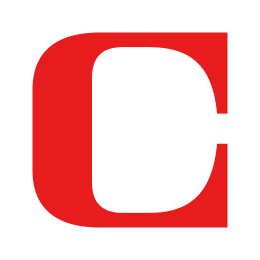 Cnet – 40.5M monthly visitors (Red Ventures)
Cnet – 40.5M monthly visitors (Red Ventures) Parade – 43.6M monthly visitors (The Arena Group)
Parade – 43.6M monthly visitors (The Arena Group) IGN – 44.3M monthly visitors (Ziff Davis)
IGN – 44.3M monthly visitors (Ziff Davis) AllRecipes – 56.2M monthly visitors (DotdashMeredith)
AllRecipes – 56.2M monthly visitors (DotdashMeredith) GoodHousekeeping – 57.8M monthly visitors (Hearst)
GoodHousekeeping – 57.8M monthly visitors (Hearst) Cosmopolitan – 64M monthly visitors (Hearst)
Cosmopolitan – 64M monthly visitors (Hearst) TvGuide – 65.1M monthly visitors (Fandom)
TvGuide – 65.1M monthly visitors (Fandom) People.com – 81.9M monthly visitors (DotdashMeredith)
People.com – 81.9M monthly visitors (DotdashMeredith) Investopedia – 94M monthly visitors (DotdashMeredith)
Investopedia – 94M monthly visitors (DotdashMeredith) MedicalNewsToday – 107.6M monthly visitors (Red Ventures)
MedicalNewsToday – 107.6M monthly visitors (Red Ventures) SpeedTest – 119.5M monthly visitors (Ziff Davis)
SpeedTest – 119.5M monthly visitors (Ziff Davis) WebMD – 223.1M monthly visitors (Internet Brands)
WebMD – 223.1M monthly visitors (Internet Brands) Healthline – 249.1M monthly visitors (Red Ventures)
Healthline – 249.1M monthly visitors (Red Ventures) MayoClinic – 376.7M monthly visitors (Ziff Davis)
MayoClinic – 376.7M monthly visitors (Ziff Davis) Fandom – 753.4M monthly visitors (Fandom)
Fandom – 753.4M monthly visitors (Fandom)
Three of the top four sites being in the health space brings back memories of how many people I knew profiting wildly before Google got more serious around YMYL (Your Money Your Life) topics.
Hopefully this gives you a better insight into the huge brands they’re behind.
Just How Dominant They Are in Google’s Search Results: We Have the Data
It should be clear from search traffic estimates alone that these brands are ranking very well for a lot of keyphrases.
If we overlay the relevant parent company onto some high-value queries, it becomes ever apparent that a lot of Google search results aren’t technically as diverse as they initially seem.
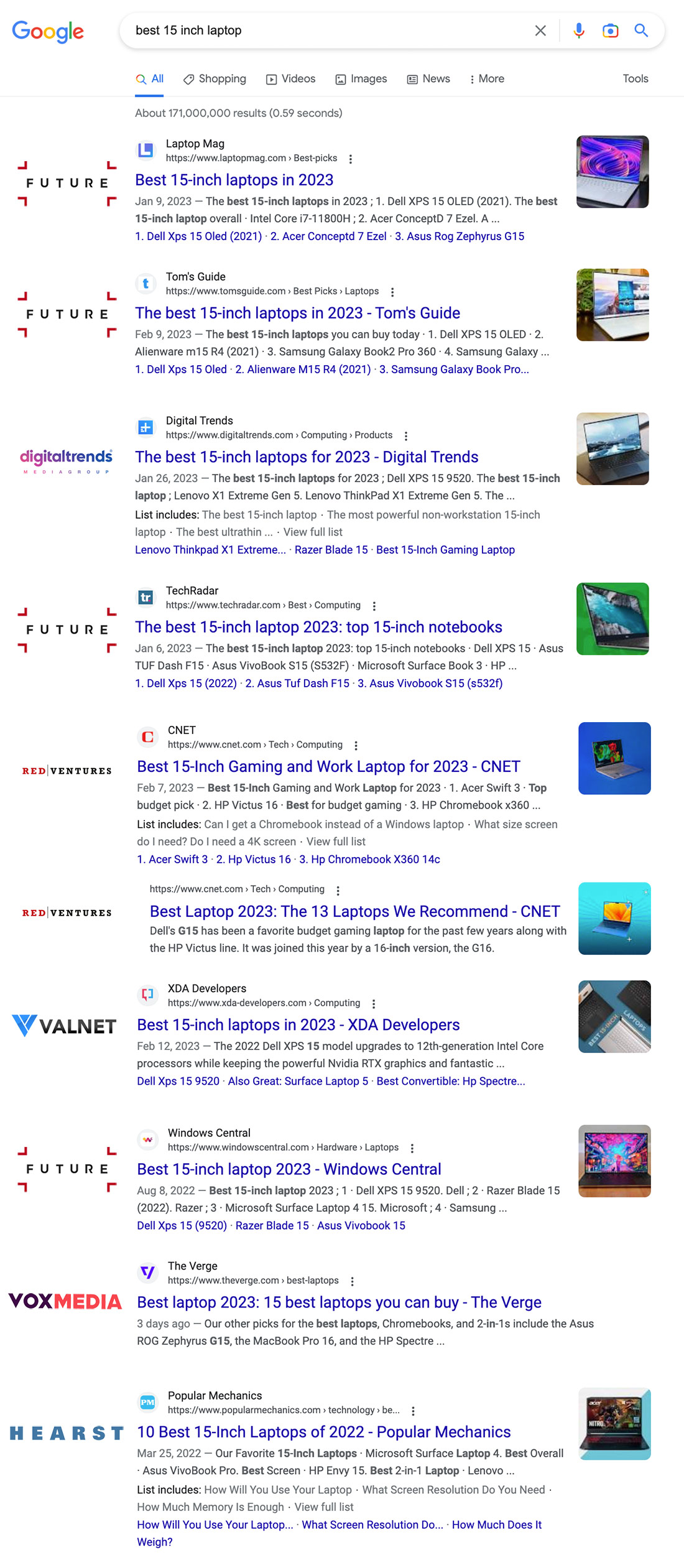
The above screenshot is heavily modified in the sense that I removed Ads and the People Also Ask feature, but I didn’t change any organic listings or their order.
I could show more individual examples but should really prioritise the results of a large-scale analysis.
You may know I recently went live with a report looking at who ranks across 10,000 hand-picked affiliate keyphrases.
I revealed that across the top 100 domains overall, just three companies were behind 40 of them. Those companies are also featured in this report: DotdashMeredith, Hearst and Future.
I decided it would be interesting to recheck all of those search results to see how often a site owned by one of these 16 companies ranks.
Across 10,000 terms where affiliates are ranking, which cover products in every niche you can think of (home, beauty, tech, automotive, cooking, travel, sports, education and many more), these 16 companies ranked on the first page of 8,421 (or 84%) of them.
That’s not all.
In 3,999 of 10,000 search results they claimed five or more of the first 10 organic rankings (!).
I don’t know about you but I think that second stat is wild. Don’t be too disheartened though — if you stick to the end of this report I’m going to share the niches they aren’t dominating.
For 330 keyphrases they took 8 of the first 10 organic listings, and for 115 keyphrases they took over 9 organic listings.
There was a single keyphrase where they were present in every organic result: Best body fat scale.
The most dominant brand was DotdashMeredith, with their websites appearing in 4,936 search results, followed by Hearst (4,304 search results), Future (3,724 search results) and Red Ventures (2,704 search results).
Just for the sake of curiosity we also decided to test how they rank for 1,000 generic queries that aren’t product-review related.
While we spent dozens of hours picking the affiliate keywords, our approach here was admittedly less methodical. We chose 20 websites from this report (across different niches) and took the top 50 terms they ranked for with between 500 and 2,000 monthly searches in the US — removing anything questionable or related to the brand of that particular website.
These 1,000 keyphrases included trivia questions, kids games instructions, car maintenance advice, date ideas, travel recommendations and so on. Just generic everyday queries that people might search for, but that these companies have already proven to write about so they’re not completely obscure.
For these generic, non-product review queries, they had at least two organic listings in 665 (66%) of 1,000 search results.
(We had to look at two organic listings as we used these sites to help us generate the keyword list — just focusing on one would be too biased).
This time they were still dominant but took over far less real estate, where there were “only” 154 keyphrases (15.4%) in which they obtained five or more organic results.
There was a single keyphrase where we saw them take over 10 organic results, which was ‘best sad movies‘.
They had 8 organic results for queries like ‘fruits diabetics can eat‘ and ‘removing dip nails at home‘, just to give you a better idea of the terms we were looking at.
While interesting, I wouldn’t take these numbers as seriously as the product review keyphrase stats as we looked at fewer terms, spent less time perfecting the keyword list and used the sites in question to help with the ideas.
It’s mostly something I was curious about myself, particularly when it came to how many queries they took over five or more organic results.
Now you know who the companies are and how dominant they’ve become, let’s see what we can learn from them.
A Preview of the 44 Specific Insights Coming Up in This Report
This is a 13,000+ word monster, so let me sell you on continuing to scroll
→ Everything they’ve said on AI, from its impact on SEO to how they plan to use it for content creation
→ How Condé Nast’s Vogue covering a specific event helped them acquire more than 100,000 newsletter subscribers
→ The site Future just acquired that reaches 180 million people each year, and it’s not in a niche you would expect
→ What happened to the general affiliate site Future acquired in the second half of 2022
→ A specific annual event they’re all-in on, that you probably haven’t been taking as seriously
→ The exact niches they’re currently building the most sites in
→ The angle that was so successful for Future in the UK, they’ve just launched it in the US
→ The biggest independent media company appears to have given up on two sites in interesting niches, and they “only” have eight
→ The homepage element on DotdashMeredith sites I really love (that most sites don’t implement)
→ All of the biggest sites they’ve acquired since January of 2022 and the niches they’re in
→ The huge brand that openly enlists an outside company to handle their product reviews for them
→ What happened when The Arena Group bought a huge brand and then took all of the content from one category and put it on a new domain
🎉 BONUS: Not only do I know what niches they’re dominating, I know what niches they aren’t dominating as well, and I’ll share those too.
And if you consider yourself to be a trader, a few of these companies are publicly listed so this may help alongside your own research (but is absolutely not financial advice).
Note: I will not reveal anything private or “blackhat”, even though I consider public companies fair game.
The majority of the insights below are from what I can see on the surface of a website or from trawling through interviews and press releases. There’s enough wisdom to share just focusing on that.
The most ‘private’ I get into is redirects they’ve been setting up, but even that is something they’re not exactly trying to hide. For instance I noticed a site called TechnoBuffalo redirecting to TechRadar because the former was still ranking well in Google and well, I was landing up on a different site to the one I was clicking on.
It’s not bad or shady. It’s their own website they purchased a few years ago to do what they want with. I just found it interesting that they shut it down.
The only way I can tell you a brand gained 100,000 newsletter subscribers from talking about a specific topic is because they shared that news themselves.
I’m just focused on the interesting things I think we can learn from — most of which (as you’ll see) they proudly promote. I won’t get into specific link-building tactics because I’m not the Google police, and don’t think I need to be to make this report valuable.
I genuinely believe these are some of the most interesting brands on the planet to watch – especially if you care about SEO – and we’re pretty lucky they love to give interviews, write investor updates and share news about what they’re working on.
Let’s get going…
44 Specific Insights from Tracking Every Aspect of Their Content & Operations
I’ve made this as skimmable as possible so you can focus on the insights that matter most to your current situation.
#1
In October Hearst Launched an Interesting Affiliate Site: Firstfinds
A few months ago Hearst introduced Firstfinds, a platform they hoped would become a social destination for people to find and purchase products online.
It’s not your typical product review site as users can vote on items (similar to Reddit) and individual pages often contain little more than a link and a headline.
It’s a pretty unique attempt at encouraging sales by helping people discover new products, rather than having them actively search for something specific.
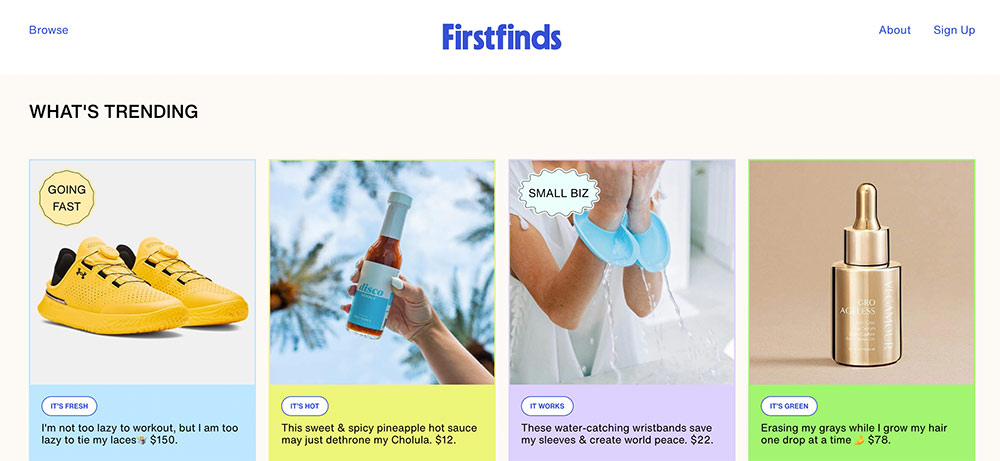
I have to give credit to the Hearst product team for trying something new, even if it doesn’t look like it has taken off just yet.
Third-party tools don’t have the greatest traffic estimates for it, and they also have very few votes on the items on their homepage.
In their defence I don’t think this is an SEO play since pages are intentionally ‘thin’, and the site makes more sense as something they would send their audience to directly.
Hearst knows the product review space incredibly well (they’re behind brands like Esquire and Best Products) so Firstfinds is a site I’ll keep an eye on going forward and let you know if anything significant materialises.
#2
Vogue Generated 100,000 Newsletter Sign-ups from Coverage of a Single Event
It’s not an event that you or I would likely have in our content schedule but I’m still fascinated by the numbers so I had to share this.
AdWeek’s Mark Stenberg reported that Vogue’s coverage of the 2022 Met Gala broke site records for website traffic and newsletter signups.
Their event updates reached more than 12 million people and gained Vogue an additional 100,000 newsletter subscribers.
That Adweek article is behind a paywall so I can’t say much more than that (and wouldn’t to be respectful even if I was a subscriber) but those numbers are huge.
If you haven’t given opt-in forms on your site much attention, here’s some motivation that people are more than happy to give away their email address for the right angle.
If you’re in this niche or want to study what they did further, the following Google search query might help:
It’s specifically looking for anything Vogue wrote about the Met Gala in the past year.
#3
Business Opportunity? The World’s Biggest Health Sites Have Sitewide Footer Links to Something That Shut Down
If you spend enough time going through the world’s biggest health sites you’ll notice a common theme across their footers.
They embed a certification from a site called Health On the Net, or HON.
Here it is on Internet Brands’ WebMD (110M+ monthly visitors):

Here it is on Ziff Davis’s MayoClinic (160M+ monthly visitors):

And you’ll find it in the footer of a lot of other sites not part of this report like Drugs.com.
When you click on any of those certifications, here’s what you see:

The announcement was made in September and they closed for good in December, yet huge sites are still sending visitors their way.
I won’t claim to know a lot about their operations so I won’t say how a competing one might succeed in its place but they did certify the legitimacy of content on over 8,000 health sites so there was a lot of demand for the concept.
Part of the appeal was likely that the business was a non-profit, but a lack of donations (which they ask for on their homepage) was probably part of their downfall.
DotdashMeredith sites removed their links to HON a few months ago so they must have noticed it shut down. I wouldn’t be surprised to see Ziff Davis and Internet Brands eventually follow suit.
Update July, 2023: The companies have now removed those footer links. One of the two examples above reached out privately to thank me for giving them a heads up.
#4
I’m a Big Fan of DotdashMeredith Brands’ Social Proof in Homepage Headers
If you’re a member of SEO Blueprint (waiting list, so not a pitch) then you’ll know I’m a huge proponent of something I refer to as Superpixels.
I love adding lots of small, neat touches across websites to add some personality and subtly let visitors know this is a resource where the owner cares about what they put out to the world.
Across at least a dozen DotdashMeredith sites they put social proof front and centre on their homepage, which is something I think all websites should have somewhere.
Here’s how that looks on Health.com:

And Lifewire.com:

On EatThis.com:

And one more example from TheSprucePets:

Just imagine you have never been to Eat This before and then quickly see in their header that they’ve sold over 7 million nutrition books. I don’t know about you, but that’s an instant signal of trust to me.
Their social proof usually comes in the form of how many people visit the website each year but they add different angles depending on the content of the site.
When there are so many sites in every niche, anything you can do to suggest you’re a great resource is a smart play in my book.
#5
That Huge SEO Platform Ziff Davis Acquired? They’ve Made It Profitable
Unless you’re very active in the internet marketing world you might not know that Ziff Davis are the company behind SEO platform, Moz (technically their iContact brand made the acquisition).

Moz was one of the first sites I read when I started in SEO over a decade ago and they’re generally still seen as one of the “big three” alongside Semrush and Ahrefs.
Ziff Davis don’t reveal any Moz-specific revenue numbers as far as I can tell, though I did find this tidbit interesting on a Q2 2022 earnings call:
It’s interesting with Moz, when we acquired Moz we knew we had a company in a very important space, search engine optimisation that had a really storied position but, as a business, wasn’t really delivering any profitability. And as we often do in situations like that, our immediate focus was how do we extract margin, how do we extract earnings from the business. And that was job one, which has been accomplished and done.
And the trick with doing that is, obviously, not damaging the brand itself, and not damaging what makes it attractive to the marketplace. And that was done as well. And you saw that live and in person, the Moz brand is as strong as it’s ever been. We think the SEO space has room for multiple players, there are multiple good solutions in this space, including Moz.
Credit to SeekingAlpha for the transcript, though note that the emphasis was my own.
#6
Valnet Acquired One of the UK’s Most Successful Tech Sites — Now Its Founder is Helping Fellow Affiliates
July of 2022 brought the news that Canadian-headquartered Valnet had acquired Pocket-lint.com, a digital tech publication based out of the UK.
According to SimilarWeb estimates, the site gets over 7 million visits each month.

Started in 2003 by Stuart Miles, Stuart owned the site for just shy of twenty years. That’s one hell of a run.
In a LinkedIn post announcing the sale he noted that he’ll be focusing on a SaaS business called Squirrel going forward.
Checking out Squirrel, it looks like something he created to solve his own issues when reviewing products at Pocket Lint. Seeing Pocket Lint’s editor as a testimonial on the Squirrel homepage suggests it has been pretty successful,
Putting Squirrel on Pocket-lint has made the job of adding and checking prices for retailers for the editorial team so much easier. When we put Squirrel on our pages we immediately saw an uplift in revenue from our affiliate partners from around the world.
It appears their main offering is a widget that helps you link a single product to multiple online stores, giving readers different pricing options and the opportunity to buy from a retailer they prefer.

I have no connection with Stuart, Squirrel or Pocket Lint, but it’s always nice to see someone passionate about a single project for so long do well. I hope the sale was a great deal for him.
#7
Bustle Now Have 1/3rd of Their Writers Working in One Niche You Don’t Hear About Often: Parenting
Bustle Digital Group’s chief content officer, Emma Rosenblum, revealed to Axios that the brands’ parenting content would account for around 27% of their business in 2022.
Some of BDG’s most popular sites include Scary Mommy, Romper, Fatherly and The Dad.

Rosenblum also shared that one-third of BDG’s content team was now focused on their parenting vertical.
When you hear about people building successful niche sites and media companies this isn’t typically a niche that gets talked about so if you’re in this space or plan to be, hopefully this gives you some inspiration.
#8
The Verge Redesign Caused a Stir But It’s Growing On Me
I don’t think I’ve ever seen a popular website being redesigned result in mostly positive press, so the negativity following The Verge’s September 2022 redesign wasn’t totally unexpected.
They didn’t just change their colour scheme but completely restructured the entire site.
The Verge consistently ranks in the top three of the world’s biggest tech blogs per our own tracking, so it was a bold bet to make such a radical change.
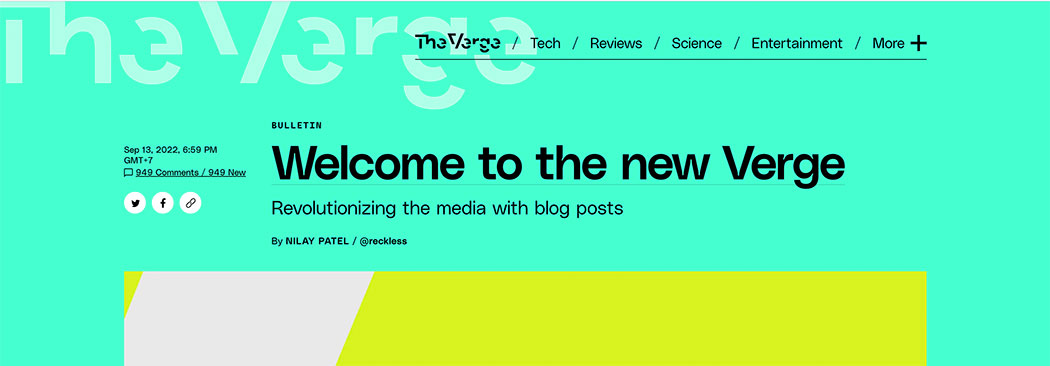
I didn’t hate it at first though did find some areas unnecessarily hard to read.
Only owner Vox Media will truly know how well it’s performing in terms of pageviews and conversion rates, but I respect that they were willing to stray from the norm.
#9
The Most Interesting Redirects I’ll Track This Year: Three Million+ Visitor Sites Become One
At the end of 2022 the DotdashMeredith SEO team did something very interesting, especially if you care about whether redirecting multiple sites can be done in a way that maintains – or grows – prior traffic levels.
They rebranded their website TheBalance.com to a previously unused domain at TheBalanceMoney.com.
Then they redirected another site of theirs, TheBalanceSMB, and all of its content. And then did the same for TheBalanceCareers, which was the biggest of the three reaching ~8 million visitors from search each month.

I don’t want to share traffic screenshots for just one company if I’m not willing to do it for all of them here, but you can take a look at Ahrefs / Moz / Semrush to see how things are going. Spoiler: Raw numbers are lower than the three sites combined but they probably had some rankings overlap, and numbers are still huge (8M+ monthly visitors).
Redirecting multiple popular sites to a single, new domain is a rare event so they must have had some good justifications for doing this.
For these 16 companies, one large site usually becomes many smaller ones.
#10
A Lot Of Their Biggest Sites Have Systems in Place to Rotate Sitewide Navigation Links
This won’t be new to everyone but it’s so rarely used across the wider web I thought it deserved a mention.
Let’s look at some examples, starting with the top navigation bar at Gamespot (~14M monthly visitors from search):

These links are present on every page of the site and frequently change.
The same is also true of the sitewide footer links in place on IGN (~38.5M monthly visitors from search):

They aren’t changing these every day but they do appear to switch them up every couple of weeks, depending on what the hot topic is at the time.
One of my favourite examples is from Byrdie, mostly because I’m a fan of the horizontal scrolling effect:

Finally, you’ll also see this present in the majority of Future-owned websites, such as TechRadar:

Some of their sites focus on the ‘Trending’ label while others write ‘Popular’ there instead.
I implement a pretty subtle version of this here at Detailed where I regularly update the announcement message (and link) at the top of all pages.
There are likely to be a few reasons they do this, the first being to increase pageviews and help people find new topics that might interest them.
They probably have some hope that Google will give more priority to the content they’re linking to – especially when they’re top-level categories – when it comes to crawling and ranking pages as well.
This especially makes sense in the gaming niche where the search volume for new titles can be huge and publishers are all fighting for the handful of top spots where all the clicks go.
As I say, I know this won’t be new to everyone, but it may be something that makes sense to try in your situation. Just don’t go overboard and start being super spammy with it.
#11
Condé Nast’s ‘Future of X’ Angle Must Have Been Successful (Worth a Try in Your Niche?)
It’s not exactly a new concept, but Condé Nast have been giving more attention to their ‘Future of [topic]’ series than most other content they produce recently. Evidenced by it gracing multiple magazine covers and earning their own individual press releases.

April 2022’s bon appétit focused on the future of food and while the September 2022 edition of Condé Nast Traveler focused on ideas behind the future of travel.
Is sharing your personal thoughts on what’s next in your industry an angle you could take with a future post? (See what I did there?)
I’ve been asked a ton lately about the future of SEO when it comes to AI so I definitely get the appeal from a reader’s perspective.
#12
If You’re Looking For a Moat Against Google Updates, These Two Sites Recurrent Acquired Might Have the Solution
I won’t claim to know a lot about the military space online, but if one of these 16 companies acquire a site I’m going to look into it more.
That was the case when in June of 2022, Recurrent acquired WeAreTheMighty, adding to their veteran-focused audience online where they already have sites like Task & Purpose and The War Zone.

The site receives 12 million visits each month according to estimates from SimilarWeb, with 40% of that coming from search. Ahrefs disagrees (and it’s not even close) but it was this quote from their press release that I was more interested in:
We Are The Mighty CEO and Air Force veteran, Mark Harper will continue to oversee day-to-day operations for the WATM team, within Recurrent’s Auto and Military vertical, led by General Manager, Jason Lepore. WATM’s marquee event offering, Military Influencer Conference, founded by Army veteran Curtez Riggs, will remain under Riggs’s leadership at Recurrent. MIC is the leading military-focused event for entrepreneurs, influencers, executives, and brands who shape and support the military community. Annually, MIC brings together more than 100 global partners and 2000 attendees over a three-day conference with eight tracks of focus.
It’s not just something that was mentioned casually (it was high up their press release) and elsewhere it’s been stated that MIC is actually the largest in-person event for the military community.
A few months before the WeAreMighty purchase, Recurrent Ventures also acquired Business of Home, a digital and print publication for interior design enthusiasts.

You could argue their print publication is a moat of its own – not reliant on the whims of Google algorithm updates – but it was Recurrent’s comments on their events business that caught my attention.
The work Business of Home produces, their diversified monetization model, and their incredible team makes them the perfect addition to Recurrent. The company’s successful events business will also yield best practices that we can implement as we grow that revenue stream across Recurrent.
Emphasis my own.
As someone who can be pretty introverted I wouldn’t personally want the pressure of regularly hosting offline events, but I know there’s a massive audience seeking them out across most industries.
Many of these conferences are started and supported by people who read the online counterpart of a brand, first.
If you’ve been thinking of ways to continue to grow your audience and your foothold in a particular industry, I hope this gives you some food for thought for one avenue you might want to explore further.
Being successful here is no small feat, but if it’s something you’re passionate enough about to pull off, it might just be the most attractive, stable part of what you’re building.
#13
How Much Money Is There in Dominating Google? If You’re Ziff Davis, Up to A Billion Dollars
If you’re in the business of managing dozens of popular sites and potentially thousands of staff (like Red Ventures), is it worth it?
We can look at how much money these companies are making to get an answer to that.
Here’s an important disclaimer for everything said below: I will source my data and I’ve done the research but please do your own if you’re using these figures to make any decisions (especially as a few of them are public companies).
Here are the most recent numbers I was able to find:
 Bustle Digital Group: $165M in revenue for 2022 [Reported] (Source:Press Gazette)
Bustle Digital Group: $165M in revenue for 2022 [Reported] (Source:Press Gazette) Condé Nast: $2BN in revenue for 2022 [Estimated] (Source: Axios)
Condé Nast: $2BN in revenue for 2022 [Estimated] (Source: Axios) DotdashMeredith ($IAC): $2.1BN in revenue for the 12 months to September 2022 [Estimated] (Source: Moody’s)
DotdashMeredith ($IAC): $2.1BN in revenue for the 12 months to September 2022 [Estimated] (Source: Moody’s) Future ($FUTR): £825.4M in 2022 revenue, £271.7M in profit (Source: Future)
Future ($FUTR): £825.4M in 2022 revenue, £271.7M in profit (Source: Future) Hearst: $12B in revenue for 2022 [Estimated] (Source: Axios)
Hearst: $12B in revenue for 2022 [Estimated] (Source: Axios) Red Ventures: $2Bn in revenue for 2021 [Estimated] (Source: NYTimes)
Red Ventures: $2Bn in revenue for 2021 [Estimated] (Source: NYTimes) The Arena Group ($AREN): $217M in revenue 2022 revenue, $3M EBITDA (Source: Yahoo)
The Arena Group ($AREN): $217M in revenue 2022 revenue, $3M EBITDA (Source: Yahoo)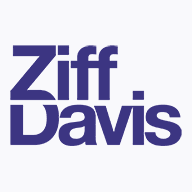 Ziff Davis: $1.39B in 2022 revenue, $507.2M EBITDA (Source: Ziff Davis)
Ziff Davis: $1.39B in 2022 revenue, $507.2M EBITDA (Source: Ziff Davis)
If a company isn’t listed here I wasn’t able to find recent enough figures.
Keep in mind that not all revenue numbers here are solely made from online publishing and sometimes they actually make more money outside of it. Hearst for example have a 20% ownership stake in ESPN and many of the brands publish physical magazines.
The reason I mentioned Ziff Davis in the headline for this section is because they separate digital media revenue in their financial reports. For 2022 we can see this surpassed a billion dollars — a 0.9% increase over 2021.
Of course, search traffic is not their only source of website visitors, which is where the ‘up to’ in the headline comes from.

As I say, don’t take any of these numbers as any kind of financial advice (especially as not all of them are profitable), but I hope they give you a small sense of how lucrative search traffic can be.
#14
Not Everyone is Thriving Though: Bustle Digital Group Are Shutting Down Sites and Looking for a Partner
February 1st, 2023 brought news that Bustle are suspending operations at Gawker, the site they had revived back in 2018.
The staff let go as part of the announcement represented 8% of the company.
Axios reports that BDG are now looking for a buyer or a liquidity partner.
In the memo they obtained, Bustle founder Bryan Goldberg wrote that “after experiencing a financially strong 2022, we have found ourselves facing a surprisingly difficult Q1 of 2023”.
A few months earlier their tech site with a quirky design, Input, shut its doors.

InputMag no longer exists on its original domain and is now on a subfolder at BDG’s other brand, Inverse. No additional content has been written there for a few months now.
I’m really curious what I’ll be writing about them a year from now.
#15
In April Fandom Sold an Online Forum & Game Guide to Hasbro for $146.3M
I’ve never played Dungeons & Dragons but I’ve seen enough hype for the tabletop game over the years that it doesn’t surprise me someone built a hugely successful site to go with it.
In April of 2022, Fandom sold D&DBeyond, a “digital toolset and game companion”, for $146.3M…cash.

The forum section alone has thousands of members online no matter what time of day you check. Those members have started 140,000+ discussions and made over 3 million posts to date.
I don’t want to butcher the description of the site as I imagine someone reading this is one of their 10 million registered users, so let me just say it appears the site makes playing D&D a lot more manageable.
#16
Future Acquired a General Product Review Site for $360,000 in 2022, With Traffic Seemingly Taking a Hit
ShortList covers everything from retro games and TV shows to the best tea bags (really) and what you should be watching on Netflix.
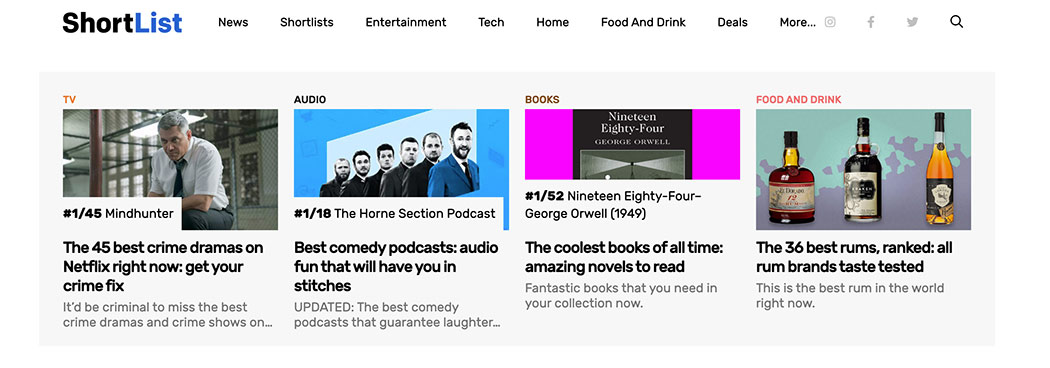
As Future are a public company ($FUTR), required filings are probably how MarketScreener was able to reveal the October 2022 acquisition price of £300,000 (~$360,000).
ShortList’s editor-in-chief was previously editor-in-chief at Future’s TechRadar brand, which likely helped cement the deal.
While the footer copyright information has changed, the site looks pretty much the same to me as it did when they bought it. I don’t think they’ve brought it into the Future fold just yet.
Search traffic appears to be 1/3rd lower now than when they purchased the site in October but third-party estimates aren’t always perfect so I don’t feel right going into too much detail here.
#17
Eight More Interesting Acquisitions They’ve Made in the Last 12 Months (Map Genie is Such a Smart Concept)
This is not every single acquisition they’ve made — just those I found the most interesting.
FEBRUARY 2022
Valnet acquired XDA and the digital portfolio of Busy Pixel Media, which also includes Pocketnow, AppAdvice, Backyard Boss and Hook & Bullet.
Tech site XDA is currently their 12th biggest site we track, reaching millions of people each month.

MARCH 2022
Future announced the acquisition of WhatCulture, a digital-only entertainment brand that boasted 3 million website visitors and 8 million YouTube subscribers at the time of purchase.

In their press release, they stated this was to help solidify their move into video. That same month they also acquired data insights platform, Waive.
APRIL 2022
Ziff Davis acquired Map Genie, a fast-growing online resource of interactive game maps. Reports suggest the entire transaction involved equity in Ziff Davis.
Even if you’re not a gamer (I’m not), you can instantly see the value a resource like this has. They’re doing really well when it comes to search traffic and without looking at Similarweb it’s the kind of site I imagine benefits massively from direct and referral traffic as well.

The founder of Map Genie has created a few other niche map sites but I’m not sure if they were part of the acquisition so I won’t “out” them.
MAY 2022
Future completed the acquisition of women’s lifestyle brand, Who What Wear. Their purchase announcement stated the site was reaching 8 million unique users each month and has a social following of over 108 million people.

JUNE 2022
Valnet added digital gaming publication DualShockers to their portfolio. Millions of people were visiting the site each month at the time of acquisition.

SEPTEMBER 2022
The ArenaGroup acquired golf brand MorningRead.com and then redirected it to a subfolder on SportsIllustrated at SI.com/golf/.
Just one problem though, they’ve only redirected the www version of the domain and not the non-www version (which has links pointing to it). There are a few other redirects I think they could have handled better, but that’s the big one.
OCTOBER 2022
Fandom acquired a number of large sites like Gamespot, Metacritic and Fanatical from Red Ventures in a deal reported to be worth around $55M.

Red Ventures originally came to own the sites in 2020 as part of their acquisition of Cnet Media Group from Viacom CBS.
DECEMBER 2022
The Arena Group purchased several brands from Accelerate360 — Men’s Journal, Surfer, Powder, Bike, SKATEboarding, Snowboard and Newschoolers.

The names are a pretty accurate depiction of what those sites cover. The deal was reported to include $25M cash up-front as well as $3.5M in deferred payments.
#18
Three RV Brands Were Massively Redesigned in The Past Year (ZDNet’s Homepage Sidebar is A Nice Touch)
As you probably know if you’ve followed my writing for a while, I can’t help but check out website redesigns when they’re announced.
In the past few months three prominent Red Ventures brands got an entirely new look, and ZDNet especially had a huge transformation.
Here’s a sneak peek of the ZDNet redesign:

The other two sites that got some attention are BestColleges (matching students with colleges) and the hugely popular Cnet (tech news).
There are elements of ZDNet I love, such as the latest news box on the homepage which is something we did at Gaps, and some things I dislike, like how text-heavy the start of every blog post is (and that’s before the article even starts).
#19
Internet Brands: 80+ Sites But Primarily Dominating Health-Related Search Results
During my research for this report it was far easier to find people talking about an Internet Brands company, WebMD, than Internet Brands itself.
Owned by investment firm KKR, Internet Brands are behind some of the biggest health sites online.
A sample of them, with traffic estimates from Ahrefs, are:
- WebMD.com – 147M monthly visitors from search
- Medscape.com – 9.8M monthly visitors from search
- RxList.com – 7.3M monthly visitors from search
- MedicineNet.com – 6.9M monthly visitors from search
It’s not uncommon to search for any kind of generic medication and find them taking up multiple search results.
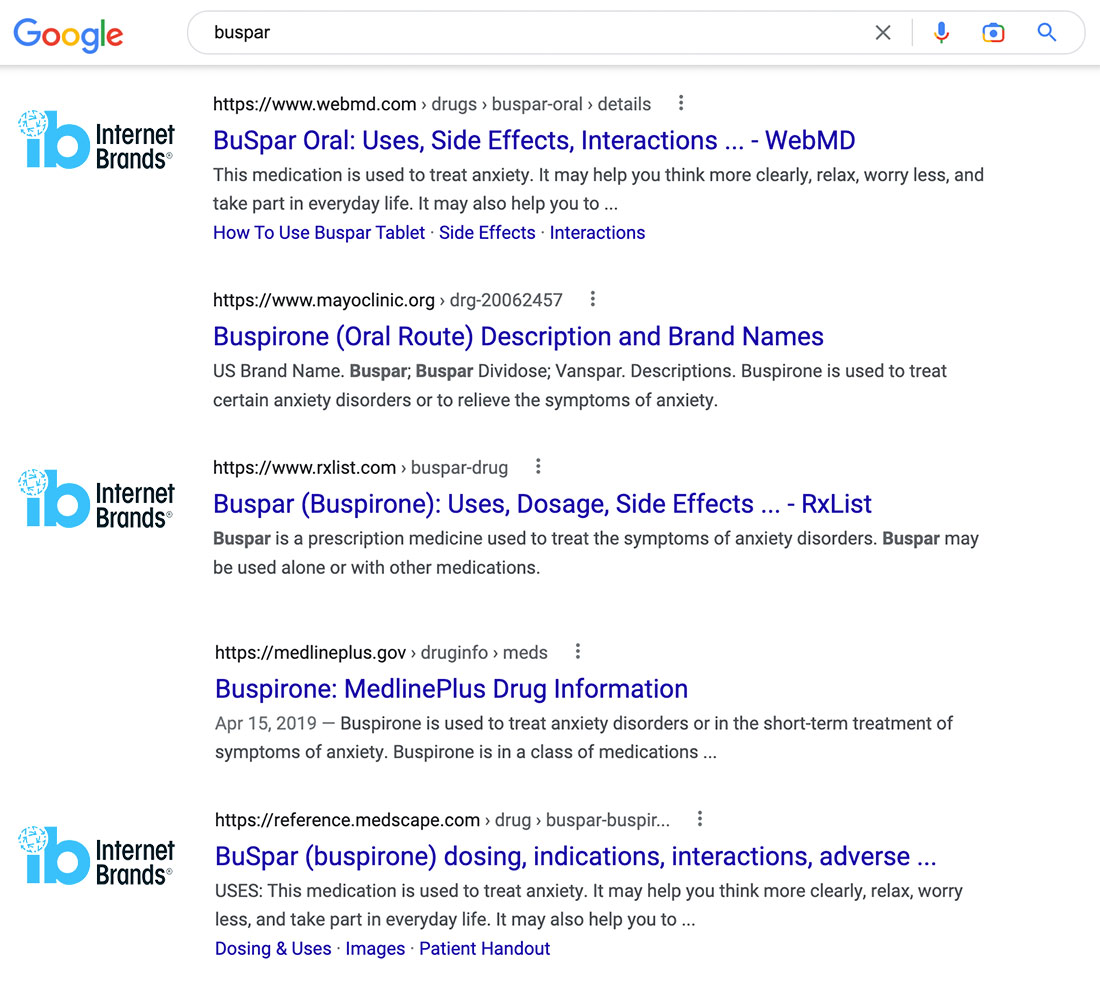
Note: I removed the ‘images’ SERP feature to clean up this screenshot.
If you put IB’s Medscape into the Ahrefs competitors tool then the site it reveals they share the most top rankings with is actually their own RXList.
They’re pretty dominant, and we track 80+ more sites for them.
As I’ll repeat at the end of this report, I have no problem with brands ranking multiple sites for the same queries. A site shouldn’t lose rankings just because it’s acquired and if it’s truly the best search result, then great.
I’m rather just trying to show the state of what’s out there.
#20
One Article, Three Hearst Websites: An Interesting Approach to Affiliate Sales
On occasion Hearst will publish the same product recommendations across a few of their sites once.
It’s hard to determine how often they do this (you have to check canonical links to every single one of their sites, and not all of them are product related) but I can tell you they’ve been doing it for a few years so it must be working pretty well.
Here’s how it looks when they roll out a single article across multiple sites:
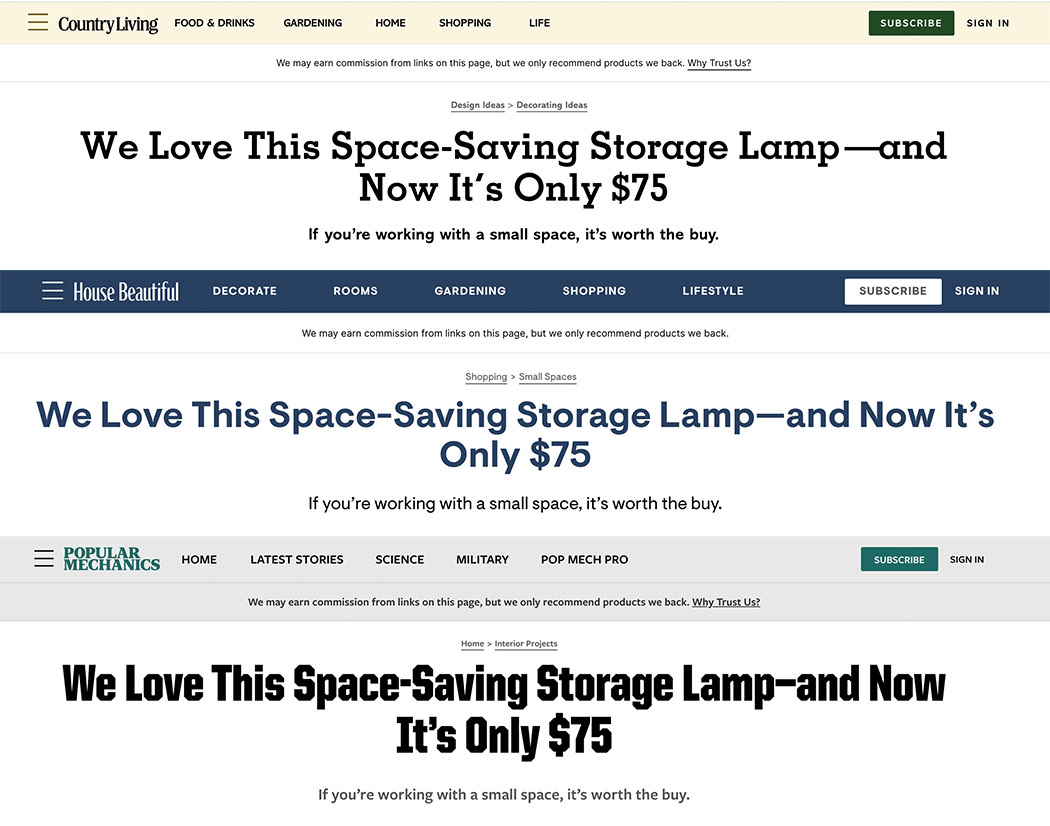
At least in this particular case they set-up a canonical tag from Country Living and House Beautiful to point to Popular Mechanics.
So you write one article and then the audience of three websites have the potential to go and buy the item through your affiliate link.
I’ve seen them doing this on other sites like Marie Claire as well.
Side note but the graphic above shows that Hearst have a design structure they really like to stick to (insight #28 takes a look at Future doing the same).
I feel like this is done primarily to make sales from direct, social and advertising traffic, rather than anything SEO-focused, especially since the headlines are very much written with readers in mind.
Lots of the world’s biggest sites do this when it comes to news and advice (e.g. Yahoo syndicating the content of others) but it was cool to see an entirely product-review focused spin on the idea from a single company.
#21
TechnoBuffalo and Thrifter Found Themselves Redirected to TechRadar in The Last Few Months
As part of Future’s 2019 acquisition of Mobile Nations they picked up sites like Android Central, Windows Central, Thrifter and TechnoBuffalo.

TechnoBuffalo never reached the traffic highs of other sites in the Future network so it wasn’t too surprising to see them redirect to TechRadar towards the end of 2022.
Thrifter found itself redirected to TechRadar around the start of 2023.
TechRadar is such a huge brand it’s hard to determine if these redirects have helped them or not, but based on traffic numbers the two sites were getting I presume this was a consolidation play rather than an SEO one.
#22
Give Yourself Permission to Try This Content Angle They Publish Every Year
If pulled off properly the content angle I’m about to share can:
- Help you get an “in” with the big players in your niche
- Get links and shares on an annual basis
- Position you as a thought leader in your space
There’s a reason a lot of people don’t do it though: It can take guts to pull off and doesn’t look great if nobody cares.
The content angle I’m referring to is giving out an annual award.
These companies dominating Google appear to be all in on it. Take a look…

→ Red Ventures’ Lonely Planet gives an award for the ‘Best in Travel’ each year. (Link)
→ Ziff Davis’ Castle Connolly has an annual award called ‘Top Doctors’. (Link)
→ Condé Nast’s CNTraveler have their annual ‘Gold List’ covering the best hotels in the world. (Link)
→ Digital Trends gives out awards for the top products they see at the industry event, CES. (Link)
→ The Arena Group’s Sports Illustrated is well known for their annual sportsperson of the year award. (Link)
→ Vox’s Eater has their ‘Best New Restaurants of [year]’ awards. (Link)
→ Fandom have their annual fan favourite awards which get their own press release and attractive graphics to go with them. (Link)
And if you need more inspiration, DotDashMeredith brands take this to the next level:
- Health.com has the Oral Care Awards
- TripSavvy.com has their annual Editors Choice Awards
- RealSImple.com has their annual Smart Money Awards
- Investopedia has their Influential Financial Advisor Awards
- Travel & Leisure has their annual Top Cities / Islands / Hotels & more Awards
- VeryWellMind.com has their annual Online Therapy Awards
- Byrdie has their annual Beauty Awards
I could go on. They genuinely have more.
Links and press aren’t guaranteed with this angle, but they could help cement you as someone who knows a lot about your space.
I can see this working well for knowledge sites and affiliate sites alike. Especially if for the latter you did some kind of annual ‘Best products in [your niche]’ awards.
Prompting people to stay tuned for next years’ winners could be a good incentive to get people on your newsletter as well.
If you don’t have a big audience I understand the hesitation to create something like this in case it doesn’t take off, but the potential upside can be pretty great.
I have no idea if people read every word of a huge report like this, so here’s the deal. If at least five people email me with an idea for an annual award they want to publish on their own site, I’ll publish my own this year and link out to yours (with a followed link, of course).
I’m purposefully not bolding that offer and making you go to our contact form manually to make sure you’ll genuinely commit.
#23
Digital Trends Seem to Have Recently Abandoned Two of Their Eight Sites: ToughJobs & Blissmark
Since its 2020 launch, ToughJobs only reached a high of 14,000 monthly visitors from Google, according to estimates from Ahrefs.

The site that covers everything from the best desk organizers to advice on how to install roof shingles hasn’t been updated in five months at the time of writing this.
Proving it can be hard to launch a new site in a popular vertical, the last post on their beauty site Blissmark was only published a day before their last post on ToughJobs.
Despite getting mentions on their flagship domain, DigitalTrends.com, things don’t seem to have played out as hoped. I wouldn’t be surprised if both sites aren’t coming back.
I want to make it clear that I’m not being critical of DTMG here. If anything, I admire that they’ve tried to take on a new niche and see what happens. And if you’ve made it into this report, you know what you’re doing.
#24
On An Earnings Call IAC Made an Interesting Comment About The Scale of Their Product Review Operations
On IAC’s Q2 2022 earnings call (IAC are the parent company of DotdashMeredith) they made an interesting comment about the size of their operations when it comes to reviewing products.
And remember, our, the way we got into commerce was not we decided we need to get into commerce, it was because our brands at Dotdash were very trusted. And the next step of making the blueberry pie is figuring out what blender you need to make it and then we thought we should start to recommend blenders. From that, sort of like humble start three or four years ago, which happened very organically, we now have 50, or 60, test kitchens. I am going to get this number slightly wrong, like 10 or 15 video and photography studios, fully blown out product testing labs, and a north of 200-person crew of people that rigorously measure, test and try every single thing we recommend. So our advantage is we’re good at the Internet.
Emphasis there my own.
I don’t know how big of an area constitutes a test kitchen but either way that’s a serious competitive advantage.
#25
How Hearst Manage Writers When They Cover the Same Topic on Five Different Sites
If you’re running multiple sites in the same niche or even review the same products for different brands, how do you manage your writing team?
Do writers who covered bikini trimmers for Harpers Bazaar also share their thoughts on the same products at Elle?
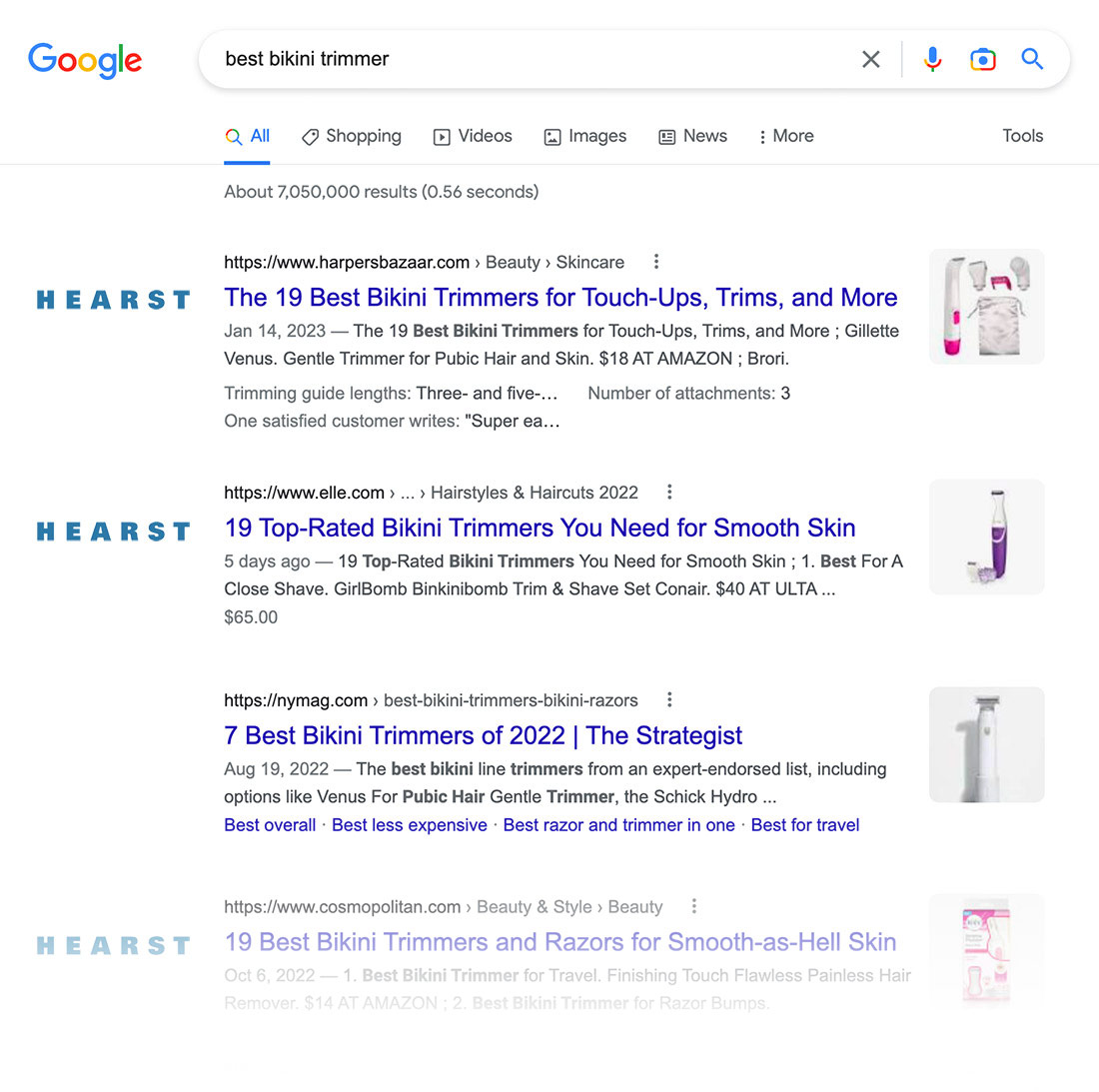
At least in the case of Hearst, here’s what I found.
If they cover the same topic on multiple sites then they use different writers. There may well be some exceptions I missed, but I never saw the same writer reviewing the same product type on different sites in their network.
I’m sure they would love to be able to repeat what they’ve written elsewhere but I imagine they are doing this, in part, to play things safer when it comes to rankings.
That said, you can very quickly find the same writers across multiple sites in their network. So if you see someone writing about bikini trimmers for Elle, don’t be surprised to see them publishing content for Good Housekeeping, Women’s Health and other Hearst brands.
#26
Accelerate 360’s Media Kit Gives Great Insights on Events to Prepare Content For
If you like to plan your content in advance then this might be the resource for you.
I’ve been going through quite a few media kits recently and this PDF from Accelerate 360’s Life and Style brand was pretty interesting.
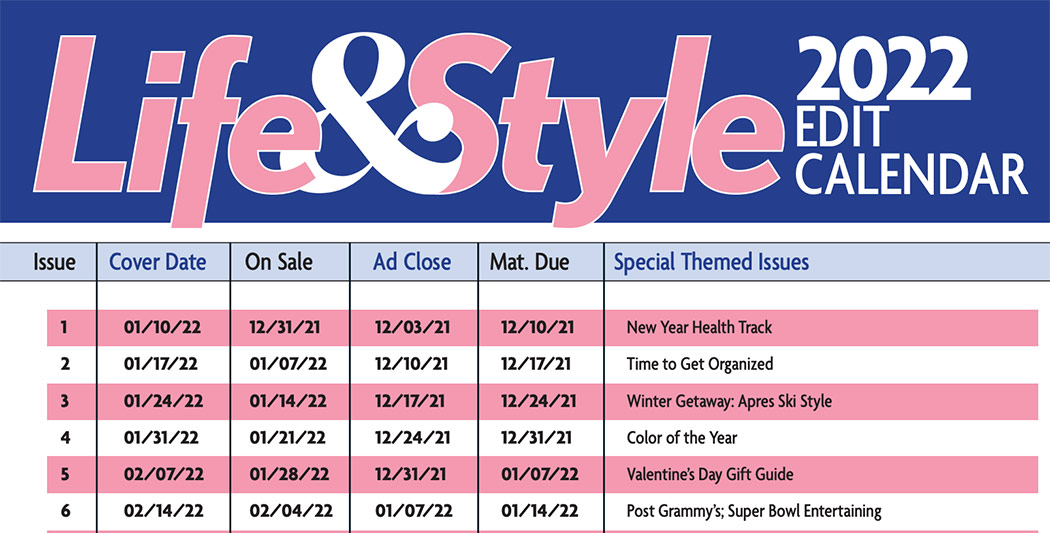
They have a magazine they want people to pick up from shelves so they have to appeal to the hot events at the time. Some dates they’re prepared for that stood out to me are:
- February: Valentine’s Day Gift Guides
- February: Winter Skin Issues / Advice
- March: Spring Break Travel Ideas
- May: Mother’s Day Gift Guide
- May: Swimsuit Season Guide
- June: Father’s Day Gift Guide
- August: Back to School (Dorm / College) Edition
- November: Holiday Travel Essentials
- December: Holiday Gift Guide
I admit there are a lot of obvious ones in there, but also a few you might now be seeing opportunities for, such as back-to-school updates or advising on “winter skin”.
If you want to take this further, then a pro tip is that a lot of the sites mentioned in this report have content calendars and media kits just like this.
#27
Here’s How Many Pages of Content People Have Created for the Highest-Trafficked Site Overall, Fandom
45 million.
That’s up from 40 million reported in March of 2022 (though I don’t know the accuracy of that lower number), with the latest numbers thanks to Fandom CMO Stephanie Fried.
If you’re not familiar with Fandom, the way it works is that it’s essentially a ‘Wiki’ (just like Wikipedia — fun fact, they have the same founder) where you can geek out on your favourite games, movies and TV shows.

Wikis get their own subdomain, such as pixar.fandom.com. In an April 2022 press release, Fandom stated they have over 250,000 wikis on the site.
As there’s so much you can discuss about any individual show or game, it helps to explain how they’ve racked up such a huge presence in search results.
I can’t tell you how many of their pages are open to Google, but Ahrefs currently estimates more than 3.8 million of them get at least one monthly visitor from the search engine.
#28
Future Love This Design So Much They Use It On 30+ Websites
Click on enough Future-owned websites and something is clear: Many of them look remarkably similar.
If it’s working for them and people just care about the content they’re publishing then why change? I get it.
I just found it interesting that at least 30 of their websites (yep, I checked them all) follow the same structure and recognisable navigation bar, just with a different colour scheme.
Here are four examples:

If you’re looking for design inspiration then it might be worth clicking around their sites to see if there are any elements you like.
#29
Ziff Davis Says Each of Their Sites Purposefully Target Different Black Friday Keywords (+ Sales Stats)
It helps knowing you have a great chance of ranking for Black Friday-related terms when the annual online shopping event occurs, but I thought the results Ziff Davis are seeing (and approach they’re taking) were too interesting not to share.
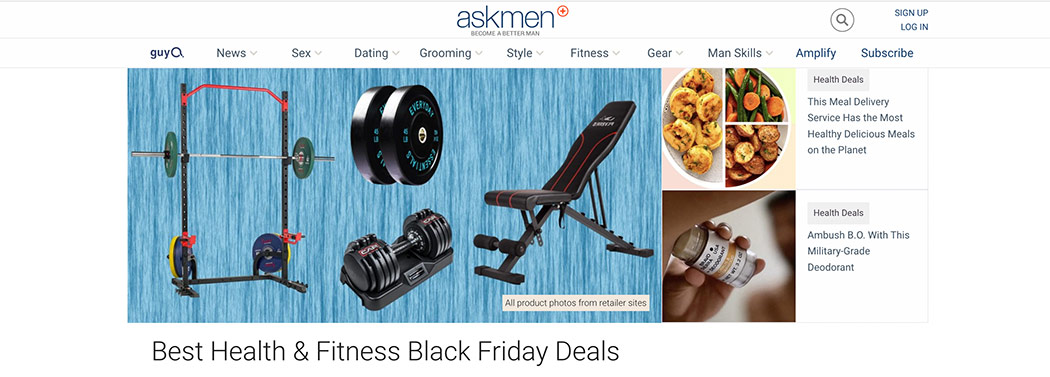
Ziff Davis are not only the owners of some of the world’s largest tech sites, but they also have three Black Friday-specific domains. Those are:
- BlackFriday.com
- TheBlackFriday.com
- BestBlackFriday.com
I should point out that as of January 2023, BestBlackFriday.com now redirects to BlackFriday.com.
However, like Sports Illustrated mention earlier they’ve messed up the redirect a little bit. Put https://www.bestblackfriday.com into your browser address bar and you’ll get a Cloudflare DNS error.
This is a site that has been around for about seven years at this point – sometimes reaching up to 36M organic visitors when the event rolls around – so the redirect is quite a big deal.
More interesting to me is that as of 2020, they started taking a different approach to Black Friday SEO. They didn’t just target every keyword with all of their sites, but split things up.
As revealed in an interview with Digiday:
Steele’s team got more surgical in its keyword approach. Steele’s team segmented Ziff’s sites by which keywords and search modifier his team thought would perform best for that site, versus last year when all of its sites went after the same high dollar keywords and search terms. Therefore, its Black Friday domains — this year, Ziff acquired TheBlackFriday.com, its third Black Friday domain — got ownership over “Black Friday,” while Mashable went after keywords and modifiers, like “Apple.”
Black Friday 2022 drove more than $9.1Bn in online sales, and digital publishers took a nice share of that action.
Future’s brands were able to help drive 130,000 transactions through their links in a single day.
And from Black Friday through to Cyber Monday, Hearst Magazines product sales experienced a 50% increase over the prior year.
In this fascinating DigiDay deep-dive they covered how online publishers are now moving their Black Friday-specific publishing strategies earlier and earlier, and help giving more context to deals (like whether it’s the lowest price ever for a product).
Our own research into Fandom’s Fanatical brand saw them promote Black Friday offers in at least five languages (English, Spanish, German, Korean and Japanese).
They also offered their own giveaways – including a Steam Deck – for people who went back to their site on the actual day to see what deals were available.
That’s a pretty novel way to get people to come back and use your affiliate links rather than someone else’s.
#30
Here’s the Revenue Generated By TechRadar’s Newly Launched Gaming Content
Announced in April of 2022, TechRadar Gaming became a new addition to the powerful TechRadar domain at techradar.com/gaming/.

It’s not clear how long it was live before their announcement but they are quoted as saying, “the site has already seen a phenomenal start achieving over 10 million monthly page views.”
It was also quickly responsible for massive sales.
“Nearly two-thirds of the audience are aged 18-34, and buying guides have increased to 60% of the nearly $8.1m of products sold through the site since the beginning of the year.”, their press release stated.
It’s pretty cool to see them share some affiliate-specific revenue there, though from what I can tell that’s the value of what they sold, rather than their own cut.
With so many sites I honestly thought they would have put this content on its own domain and not try to “risk” the relevancy of the main domain. Though I am aware they also have GamesRadar as a separate site.
Search engine traffic to TechRadar appears to be down significantly since the gaming subdirectory launch, though I can’t say if there’s any correlation.
#31
The Affiliate “Store” on Marie Claire Was So Successful in the UK 🇬🇧, It’s Gone Stateside 🇺🇸 (This Could Work in a Lot of Different Niches)
Future recently referred to Edit, a section on the Marie Claire website, as a “Groundbreaking ecom experience”.
It’s cool that it’s personal – you can see recommendations from various Marie Claire editors – but its primary function is just to take you to the product pages of other websites through affiliate links.

It was interesting to read that it’s so successful, especially when they haven’t taken care of a lot of basics (like getting a favicon) and images across all their categories are broken for me.
Either way, this model has worked so well since its 2018 launch in the UK, they decided to launch it in the US in 2022.
The Edit leveraged the vast digital reach of the Marie Claire brand to deliver strong SEO capabilities and rank for more than 23,000 key shopping and branded terms, doubling its revenue year over year with an average order value of £397.
On the surface the US version looks quite small to me, but their UK version currently boasts over 1.5M products from 55 different stores.
The concept almost seems too simple but I can definitely see the appeal of shopping multiple brands in one place.
#32
This ‘Save Article’ Feature on Hearst Sites is Probably Responsible for a Lot of New Email Subscribers
I mean, they wouldn’t offer the feature if it wasn’t used, right?
And they definitely wouldn’t put it on some of the biggest websites in their portfolio.
Here’s the Save Article feature I’m talking about on articles at Esquire:

And here’s what happens when you click on that button:

Not only is this in place on Esquire but also on food site Delish and popular woman’s brand Cosmopolitan.
Tens of millions of people see this option every month.
Here at Detailed I don’t write enough content for it to make sense, but if I had the output of Hearst it’s something I would love to try.
#33
Jay Penske: PMC’s Mysterious Founder Who Benefits from Oscars and Emmys Advertising
This NYTimes profile of Penske Media Corporation’s founder, Jay Penske, was pretty eye-opening.
Jay, the son of a billionaire, has become one of the most influential people in entertainment news thanks to ownership of publications like Rolling Stone and Variety.

Here’s one quote from the piece that stood out to me,
And his company has become a prime landing spot for the tens of millions spent annually on Oscars and Emmys advertising, a market that has heated up in recent years as streaming platforms spare no expense in their quests for prestige and attention.
With specific brands in the PMC portfolio (Variety, Hollywood Reporter, Rolling Stone, Billboard, Deadline), he’s certainly in the right position for those in entertainment with advertising dollars to spend.
#34
NYMag’s Scroll-Up Menu Bar is Still One of My Favourite CTA’s on the Internet
I’ll keep this short because it’s such a simple concept but I think anything that catches your attention when looking at hundreds of websites is worth noting.
I refer to anything that adds a little personality to a website as Superpixels.
If you read an article on NYMag’s product-review section, The Strategist, and start scrolling back up the page, a menu bar pops up from the footer. You kind of have to see it in action to “get it”, but here’s how it looks:

To reiterate, this only appears if you scroll up the page towards their logo, rather than down. It catches your attention because “pop-ups” don’t usually get triggered this way.
If readers are scrolling back up there’s a good chance they’re heading for your menu bar, so something like this to encourage more targeted pageviews is pretty smart to me.
Hey, I did say it was simple.
I’ve never seen it used elsewhere, and it’s something I’ll eventually get around to trying out myself.
#35
These Two Recurrent Brands Are Seeing Record-Breaking Growth
This data is a little older than I would typically like to share (January 2022) but I find the niche the two sites are in fascinating so I think this is still recent enough – and relevant enough – to cover here.
Recurrent’s Cathy Herbert shared in a press release that traffic to Field & Stream was up 70% YoY and traffic to Outdoor Life was up 65% over the same period.

Field and Stream, which covers hunting and survival topics, had an all-time traffic high in October, reaching 5.2 million users.
Outdoor Life covers the same hunting and survival space, hitting their all-time traffic high the following month in November, with 4.1 million users.
This is a niche that I was operating in many years ago and I know of at least one internet marketer who was making millions per year in the space.
With all that’s going on in the world right now I wouldn’t be surprised to learn interest in the type of content they’re producing is trending upwards.
#36
How Much Commission BankRate Can Earn as a Credit Card Affiliate
If you want to see how digital powerhouses really tackle SEO, spend some time digging through ‘best credit card’ and related search results.
Spend even more time there if you think links don’t matter for search engine rankings.
Any kind of credit card query has lots of authoritative sites vying for the top spots and for good reason: At least in the case of BankRate, getting someone to sign up for an American Express or Chase card can net them $300 to $900 per card.
These numbers were taken from the NYTimes profile of the company mentioned in the Jay Penske section above (but here’s the link again), in relation to $1.4Bn Red Ventures spent acquiring BankRate.
#37
At Sports Illustrated They Enlist An Outside Company to Create Product Review Content
The Arena Group’s Sports Illustrated brand is quite open about their review content – which I’ve found ranking very well at times – being created by an outside company.

That outside company is Pillar4, who are home to some of the biggest affiliate review sites on the web (Mattress Clarity, Sleepopolis, Mattress Advisor, etc.).
They also run one of my favourite YouTube channels: Garage Gym Reviews.
I don’t know the full terms of their deal but I imagine Pillar4 handles all the leg work (buying the products, properly reviewing them, writing up their thoughts) and then The Arena Group gets to use the power of the SI brand to rank and also get sales from direct and social media traffic.
Then they share the proceeds.
#38
Following The Arena Group’s Purchase of Parade, They Spun-Off a Section and Launched ParadePets.com (And It’s Ranking Well)
I have a feeling this was planned before they took over the site as The Arena Group very quickly launched ParadePets following their Parade acquisition.
If you’re like me and weren’t familiar with Parade before then let me say it’s a media powerhouse. Attracting 25 million+ visits to their site each month (Similarweb) and previously reaching up to 54 million people with their print magazine (which ended its run in November of ’22).
According to Ahrefs data, in just a few months the new site has quickly grown to reach hundreds of thousands of visitors per month from Google.
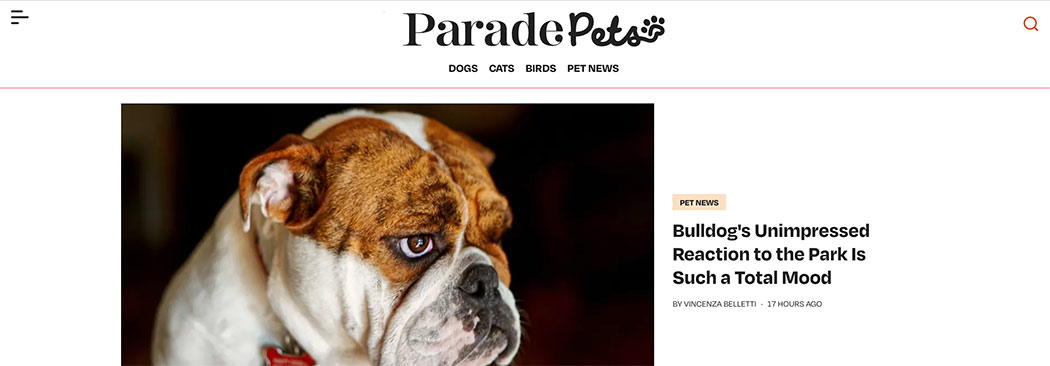
They essentially spun off the pets content from the original Parade site to get the ball rolling. Just to be clear, The Arena Group mentioned this new site in a press release so I’m not revealing anything private.
I generally don’t think it’s my place to share traffic graphs these days (even if they are a public company) but if you want to see a huge spike up, put the new site into Ahrefs / Semrush / Sistrix.
If the content was worth ranking before, then I generally think it deserves to rank on a new domain as well. Either way, I think this will be interesting to watch.
#39
DotdashMeredith Have 250 Staff Dedicated to Reviewing and Researching Products
The Wall Street Journal published an interesting piece on the Better Homes & Gardens brand in July of 2022, going into detail on how teams at DotdashMeredith review products.
They were photographed putting sand on the floor of one of their facilities in order to review beach towels, which I guess makes sense but it’s not something you ever really think about.
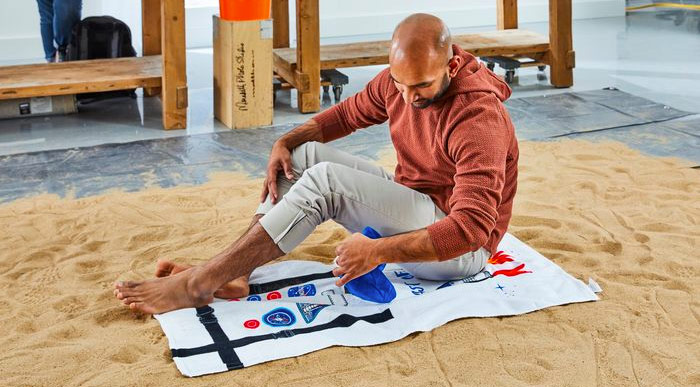
Two quotes that caught my attention were:
Out of Dotdash Meredith’s 4,000 employees, about 250 are dedicated to testing and research—gathering information about a product, such as watching videos on manufacturers’ websites, according to Tory Brangham, the company’s chief commerce officer.
And:
Mr. Vogel said stand-alone websites focused on specific categories performed better than general sites like About.com, because people seeking advice are looking for brands that have expertise on a specific topic. The company acquired and created more brands in categories like finance and technology, beauty and food, ultimately creating the Dotdash umbrella brand.
I recommend giving the piece a read, though note that it’s behind an intermittent paywall. Sometimes I could access it without being a member and other times I couldn’t.
If nothing else I thought it was interesting to see how the biggest affiliate brand on the planet earn their commissions.
#40
The Two-Day Annual Sale at Vox Media’s NYMag is a Really Smart Affiliate Play
I imagine there’s a ton of work involved in this, but there’s likely a good reason that Vox Media’s NYMag (and specifically their The Strategist section) have ran their two-day sale for three years in a row.

Taking place in April each year, it appears they reach out to the brands they’ve featured as the top products in different categories to get exclusive discounts just for their readers.
This is shown by the fact that you need to use discount codes like STRATEGIST or NYMAG15 to get the deal.
They wouldn’t be doing this if it wasn’t working out well for them, and if it becomes big enough they might even get people waiting for this time of year – like they do for Black Friday – before purchasing specific things online.
Super smart.
#41
Ziff Davis Technically Invested in 150+ Media Brands for $15M (Some Are Dominating Google in Their Own Right)
In April of 2022 Ziff Davis invested $15M in Group Black, whose mission it is to support more black-owned media brands and help more black-owned businesses acquire digital advertising dollars.
Ziff Davis now have an ownership stake in the business, which includes a lot of successful sites.

The collective currently spans 150+ media brands (!) including the likes of:
- Afropunk
- Essence.com
- The Baby Sleep Site
I wasn’t familiar with them previously but the homepage of The Baby Sleep site says they reach over 500,000 parents each month. Essence.com numbers are huge, and I imagine there are even more impressive numbers throughout the network, giving Ziff Davis even more presence in search results going forward.
Mentions of Group Black can now be found across the footers of Ziff Davis’ most popular sites (like IGN) so it’s an investment they’re taking seriously.
#42
AI and SEO is The Hot Topic Right Now: Here’s Their Take
I’m still writing up my thoughts on what I personally think about AI and SEO for a separate article, but let’s look at the thoughts of companies where any serious changes to how Google operates, or their dominance, could be worth billions of dollars overall.
Let’s start with Vivek Shah, CEO of ZiffDavis
Just a few weeks ago, in a February 2023 earnings call, he said,
I believe every of the search operators, whether it’s Microsoft or Google, understand that the underlying content providers need to get value, and that value is expressed in traffic flow, and I don’t think that’s going to change. If the engines they use and the algorithms they use refine the answers, I think properties like ours who provide, I think, the highest value intellectual property in that equation, will do best. So, I don’t view the evolution of search engines or answer engines or whatever you want to call them, as being anything but really positive for high quality content providers who provide the underlying information for that query..
He also added, regarding content creation…
I certainly believe that artificial intelligence has a role in parts of that editorial workflow, and we’ve been using it and will continue to use it. I will say though, that I think for high quality content generation, human plus artificial intelligence, I think, yields the best outcome. So, I think the answer to your question is that generative AI will allow us to produce more better content over the long-term. It’s a productivity gain more than anything else, which we’re excited about and we currently use and have been using.
IAC‘s Joseph Levin Had the Best Response I’ve Read Yet
Taken from a February 2023 earnings call when asked about ChatGPT and generative AI, IAC’s CEO Joseph Levin (who are the parent company of DotdashMeredith) replied,
You can ask the bot questions and it’s amazing at answering those questions, but it doesn’t have a voice, it doesn’t have experience, and it doesn’t have a brand that stands behind those results. In fact, it sort of goes out of its way to not stand behind those results. And I think that’s really important in areas like cake making, which we’re doing with in a literal sense with food, but also in travel and, and home and things like that, like creating new tastes and creating new content around that is really important to have a brand and have a voice, which is what we have at Dotdash Meredith.
His answer was quite a bit longer than that, but I want to be respectful to SeekingAlpha who published the transcript. It definitely paints the future in a more positive light than others.
I can’t help but think the answer was actually a little too good however, and was probably well prepared in advance.
DotdashMeredith’s Message on Using AI for Content Creation is Straight the Point
Neil Vogel, the CEO of DotdashMeredith, said “We will never have an article written by a machine” in an interview with Axios.
He did add that his team would use AI for workflow and processes, and currently uses it for things like sourcing images for articles.
The Arena Group Have Teamed Up with Two Brands for AI Content Creation
In a February 2023 press release they stated,
The Arena Group today announced strategic development partnerships with two AI firms, Jasper and Nota. These partnerships will build on successful Company AI pilots run over the past two months on content production workflows that showed substantial productivity gains for editorial teams.
Sadly I don’t know their take on Google and how changes might impact the traffic it sends, but it’s still nice to see they’re not hiding away from the topic entirely.
Recurrent’s Futurism Has Taken Every Dig at Red Ventures They Possibly Could
In recent months you may have seen the drama around Cnet publishing AI-created content which was revealed to contain a lot of inaccuracies.
Recurrent’s Futurism is one brand pushing the stories around this, with actual headlines like:
- CNET’s Article-Writing AI Is Already Publishing Very Dumb Errors
- CNET Secretly Used AI on Articles That Didn’t Disclose That Fact, Staff Say
- Leaked Messages Show How CNET’s Parent Company Really Sees AI-Generated Content
- I Work for CNET’s Parent Company. Its AI-Generated Articles Disgust Me.
Besides being major competitors in search results it seems like they have additional motive here, but either way I thought you would be interested to know who is actually behind a lot of those stories.
#43
16,000 Articles. 180M Annual Visitors? And That’s Just One of Their Gardening Sites
If you’ve read my guide to the world’s most successful blogs then you’ll know there’s a lot of money to be made in the gardening niche. EpicGardening founder Kevin Espiritu revealed to NBC the hit site was on track to earn over $10M in 2022.
With that in mind, it shouldn’t be a total surprise that so many media brands have their own sites in the niche.
- Arena Group have
 DenGarden
DenGarden - Condé Nast are behind
 House & Garden
House & Garden - DigitalTrends own
 HappySprout
HappySprout - DotdashMeredith are behind
 Better Homes & Gardens
Better Homes & Gardens - Future own
 Gardeningetc
Gardeningetc - Future also own
 GardeningKnowHow as of 2023
GardeningKnowHow as of 2023 - Hearst primarily focus on gardens with
 Veranda
Veranda - Valnet own
 BackyardBoss thanks to their Busy Pixel Media acquisition in 2022
BackyardBoss thanks to their Busy Pixel Media acquisition in 2022
I admit Better Homes & Gardens is more about the home than gardening, but you can’t deny many of them clearly like this niche. Especially when there are more sites I could have covered where gardening is a huge part of their content like Good Housekeeping and The Spruce.
Future just acquired GardeningKnowHow in February of 2023, and something that stood out in their press release was stating it attracts 180 million people to the site each year. The literal text was, “the site has grown to now attract over 180 million gardening enthusiasts every year” which sounded too high to me.

Ahrefs and SimilarWeb data doesn’t corroborate that but they aren’t in agreement in this case either — Ahrefs numbers for their search traffic alone is higher than SimilarWeb estimates for every traffic source combined.
Here’s where I think they got their wording wrong. Their advertising page states they receive 15 million visits each month. Not visitors as implied by the press release. 15 x 12 (months of the year) = the 180 million figure.
Either way, it’s still huge. Future clearly have Google-focused plans for the sites’ 16,000 articles as well.
By joining Future, the team will be able to drive greater monetisation from this wealth of valuable evergreen content thanks to Future’s proprietary technology and SEO expertise.
I can’t wait to see if they’re able to pull that off. I’ll update you in the 2024 edition of this report.
#44
The Exact Niches They’re Primarily Publishing Content In
For the 500+ websites we track for these brands we decided to look at the most popular categories they publish content in.
We used Similarweb as a starting point for this data but as they were clearly wrong on a few occasions we made some tweaks to improve accuracy.
- 🏥 Health: 67 sites
- 📰 News & Media: 63 sites
- 🖥 Computers & Tech: 61 sites
- 🎨 Arts & Entertainment: 58 sites
- 😎 Lifestyle: 38 sites
- ⛳️ Sports: 35 sites
- 🏡 Home & Garden: 34 sites
- 🚘 Vehicles & Automotive: 31 sites
- 🍔 Food & Drink: 29 sites
- 💰 Finance: 23 sites
- 🗂 Business & Consumer Services: 21 sites
- 👨⚖️ Law & Government: 18 sites
- 🕹 Gaming: 14 sites
Other categories include the likes of Jobs, Pets, Science, Travel, and Hobbies.
✨
A Bonus for Making It This Far: The Niches They Aren’t Dominating
While at least one of 16 companies’ websites was present in 84% of the 10,000 product-review keyphrases we checked, that still leaves 16% of keyphrases where they didn’t rank at all.
Not forgetting in the 8,400 search results where they were present, they “only” took over all ten organic listings once.
Other networks show up at times in the 1,600 search results where they didn’t appear at all, sure, but they aren’t taking up every single ranking.
Before I dive into the niches they’re not as dominant in, I want to give a disclaimer of sorts.
If you want to go and compete with the digital goliaths in Google then please don’t let this report stop you. If you want to create the next big tech / sports / health site and you have a real passion for that, then you have my full backing.
I know it’s meta to say this but I proudly write about topics (link building, keyword research, etc) where hugely profitable companies, who have teams of writers and designers, are covering the same thing. A few of them are publicly listed with multiple popular brands.
If someone told me that to stand any chance of attracting an audience from search I had to niche down and only cover link building, or only cover site speed, that would be pretty depressing.
These 16 companies, and those like them, don’t rank in every niche. Don’t always grow their sites. Don’t always take over the top results.
There will always be opportunities available if a bigger slice of the pie is your aim.
And if it’s your goal, who knows…you might be the next independent site they look to acquire.
Now onto what looking at the data tells me.
First of all, I know this isn’t a revelation but these 16 companies are less likely to target lower volume keyphrases, such as in the affiliate space where you can change your query modifier from ‘best’ to something like ‘lightest’, ‘recommended’, ‘most reliable’ and so on.
If Google are rewarding title tags and content focus with a less-popular modifier then Hearst, DotdashMeredith and Future probably aren’t your competition anymore.
Because they know they can rank for the general terms that get a lot more volume, that tends to be what they target.
Secondly, there are countless specific sports, industries and hobbies they don’t cover all that well.
Fishing. Fish keeping. Motorbike riding. Tennis. Sewing. Audiophiles (far beyond the ‘best headphones’ kind of query). Snowboarding. RC racing. Board games. Off-roading. Books. Coffee. Survival equipment. Horse riding. Hiking. Beard care.
There are lots more, but I think you get the idea.
If it’s not a broad top-level niche category like Sports or Tech, they don’t seem to have as much interest in building it out. And often, at least for many of the search results I’ve looked at, Google likes to rank very specific sites that don’t stray too far out of their space.
As I say, don’t avoid niches that you want to go for just because they’re operating in them. There can’t be many topics left where there aren’t some hugely authoritative sites ranking. Just keep in mind if there’s a ton of traffic and money to be made serving a particular industry, because they have a chance to rank, they’re probably trying to.
I Don’t Know How You Feel About This, But Here’s My Current Take
There are two obvious ways to look at this report.
The first is to find it so demoralising that so few companies have such a strong hold on Google search results that it ultimately deters your own SEO-focused ventures.
The second is that you can find it motivating to see what’s possible and whether there are any insights from big brands you can use on your own projects.
I admit I have some bias here, primarily because I write about SEO and I’m all-in on our private training. I’ve been doing SEO for over a decade and it would be pretty depressing if I truly believed that the opportunity to rank new websites (and make serious money from those rankings) has disappeared.
I can certainly see why this report might not make SEO look the most promising venture, and please trust that I know how frustrating it is when objectively worse content outranks your own, just because it’s on a domain with much more “authority”.
A few readers are thinking about Forbes right now. You didn’t see this.
In all honesty though I don’t think too much has changed in the seven years since I first published this report. Quite a few of the big sites have switched brands, but the sites competing are mostly the same.
Independent publications, affiliate sites and eCommerce stores started after my first report have gone on to make life-changing sums of money.
I know of independent affiliate sites which grew by record numbers in 2022. I saw past clients hit new heights.
Both a friend and two past clients were acquired by brands on this list in the last few months.
There are always people who can compete.
When I first shared my findings in 2016 most people had no idea just a few brands controlled a lot of Google search results. I think that’s slowly creeping into the common knowledge of webmasters, so that isn’t ever going to be the revelation it was.
Back then I was a lot more surprised by how Google just let them redirect different categories of one site to brand-new domains and completely take over niches.
Nothing surprises me anymore in search, so now I’m less concerned with how much they might be linking their own sites to each other and more focused on seeing if there’s anything I can learn from their actions along the way.
I’ll keep watching sites they launch with quirky ideas (like insight #1) to see if any of them start to take off.
Look for design elements in redesigns I might want to put my own spin on.
Notice the niches they keep building and selling sites in to see if there are any trends to spot.
If Google’s upcoming AI play, Bard, takes off in a big way then the earnings calls of Ziff Davis, IAC (DotdashMeredith) and Future are going to be a lot more interesting.
(This might be the most fascinating of all, as it’s not like they can hide from it. They’ve already been asked questions on earnings calls as I’ve shared here and on Twitter, and I’ll continue to monitor them for you).
I’ll also monitor sites they acquire that – after getting incredible links from other sites in their network – start to rank better or worse. If third-party estimates are to be believed, a few are now ranking worse.
I guess this is all to say that seven years on, I’m less concerned about how they might be getting an unfair advantage in Google that I can’t control, and far more interested in what I can learn from what they’re doing in the process.
If that’s something that interests you as well, I’ll be back next year with the updated version of this article and let you know what else we can learn. The opt-in form below will make sure you don’t miss a thing.
Until then, this was a 13,000+ word report that I really hope you got a lot of value from. Sharing this with someone you think would find it valuable or retweeting my thread (I notice every single RT) would be much appreciated.
I’m biased, but if you want more actionable advice for your specific situation, check out the SEO Blueprint waiting list as well. We’ve updated the training for more than three years now, and this year’s updates are going to be some of our best yet.
Thank you for being here.
– Glen






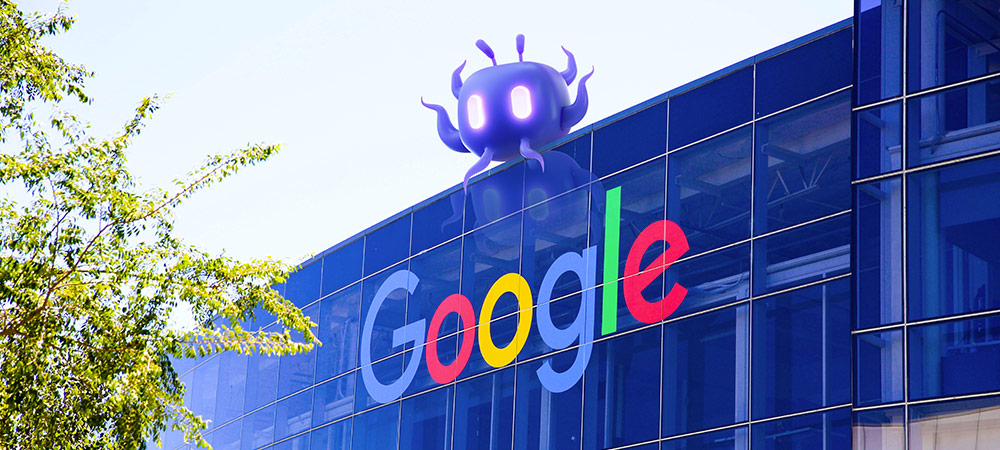




 568
568 
 is our own fully fledged SEO framework and private community focused on taking search engine rankings to the next level.
is our own fully fledged SEO framework and private community focused on taking search engine rankings to the next level.

